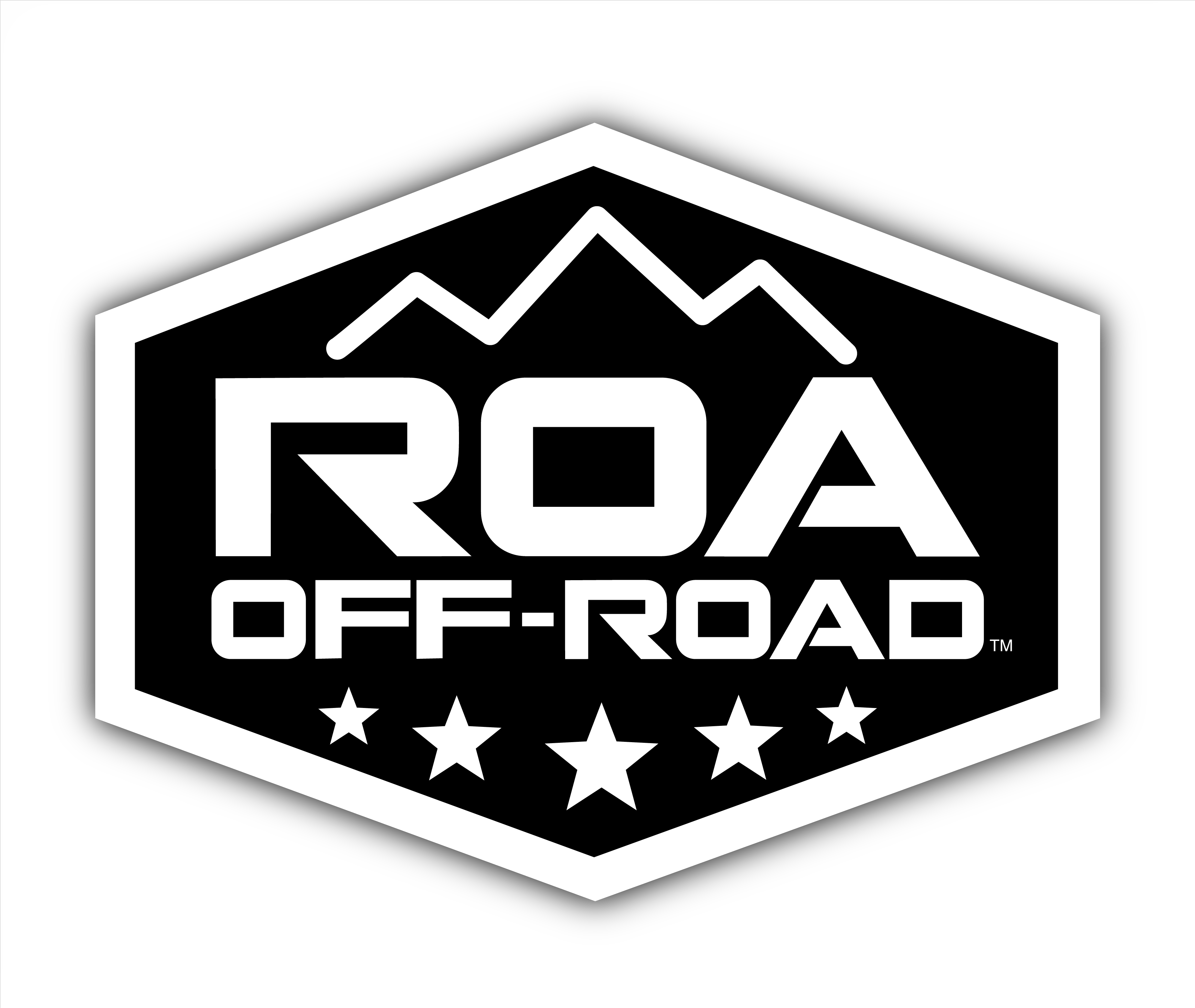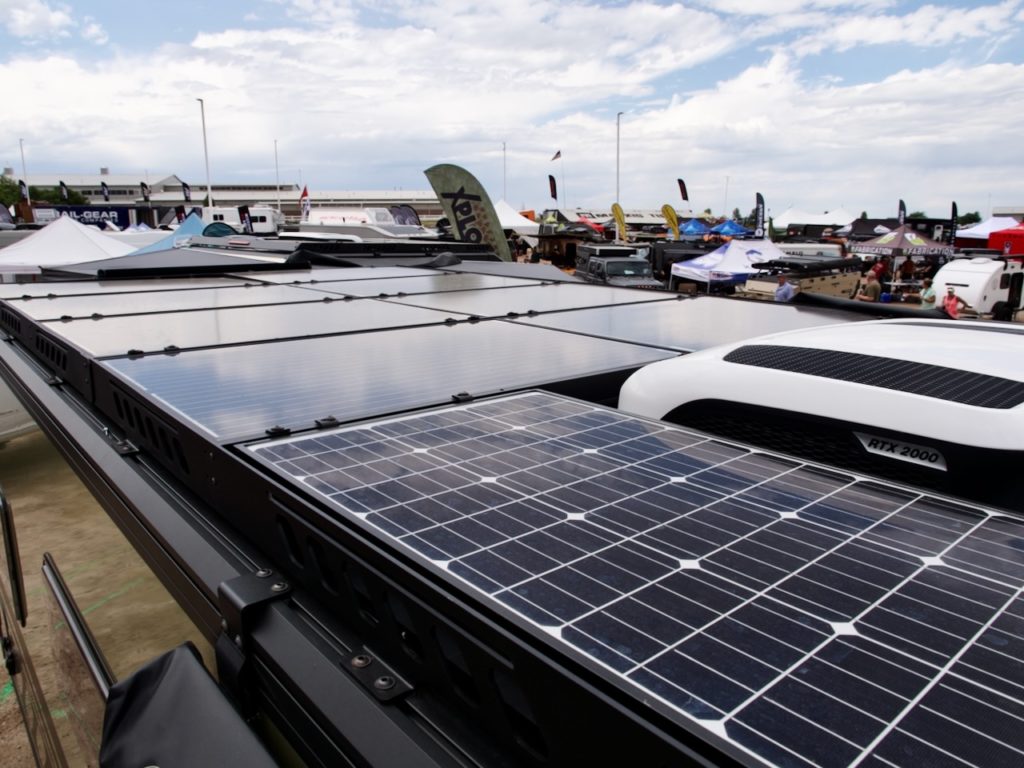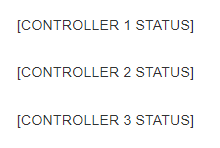Many people are intimidated by the Solar System on their Imperial Outdoors trailer, when in reality, it isn’t incredibly complicated.
We wrote this article to provide those that own a ROAMER 1 or X195 trailer by Imperial Outdoors with a greater understanding of the solar system on their trailer. The specs in this article reflect the typical conditions seen in Utah during the winter, spring, and summer months on an X195 or ROAMER 1 trailer. If you own an X145 trailer you should expect to see approximately 60% of the values cited in this article. This is due to the fact that the X145 is much smaller and only features up to 740 Watts of solar on the roof.
Imperial Outdoors collaborated with GoPower, a prominent North American provider of Solar Solutions, to develop a solar array and electrical system for their new line of 2023 trailers that has wowed geeks everywhere. We’ve been selling and working on trailers with GoPower products for quite some time now, and we can affirm that their products provide our ROAMERs with an excellent and reliable experience. If any issues arise, we know that GoPower’s Customer Support Team will be there in our corner to help our technicians or our ROAMERs out with whatever they need. We always recommend that user takes the time to study the user manuals for both the GoPowerSolar Remote and the GoPower Solar Controllers.
Parts of the Solar System on your Imperial Outdoors trailer
Understanding what parts and pieces constitute your solar system significantly demystifies it. In reality there are only 3 parts in your solar system:
- The Solar panels: These convert light into electricity
- The MPPT Solar Controllers: The solar controllers take the energy sent by the solar panels and use it to safely charge the batteries. On a more technical level, Lithium Batteries typically want to be charged at around 14.4V, but solar panel arrays produce up to 40V. The solar controllers convert the extra voltage from the solar panels to amps without power loss.
- Lithium batteries: Your Expion 360 Batteries provide power to everything in the trailer.
All other parts behave independently of the solar system; these 3 parts are the only components to your Imperial Outdoors Solar System.
The roof of your ROAMER 1 trailer (or fully upgraded X195) features 11 panels rated for a total of 1240 Watts, divided into three different groups—the stages mentioned earlier. The diagram below visually represents the components in your solar system.

“What am I looking at?”
The roof features 11 different solar panels, there are 3 solar controllers under the bed, and you have 3 remotes above the door. How are you supposed to know what to look at?! It all seems really complicated and complex.Fortunately, in order to comprehend our solar system, we only need to understand the values that the solar remote presents. This article will teach you how to read and understand your GoPower solar controller.
Reading the solar Controller
A quick view of the values seen on the face of the solar remote and what they represent:

Focus on the Top row labeled ‘Solar’: Here, we observe the watts generated by our solar panels. This is the most important number on your solar controller. By looking at the Watts on the solar controller, we understand much of what is happening in our Imperial Outdoors Solar System.
A few factors determine the Watts value:
- The remaining capacity of your battery bank
- Solar panel efficiency. All solar panels ever are over-rated, doesn’t matter what trailer they come on or who manufactured the panels. The solar panels on the Imperial Outdoors Solar System have about 75% of rated capacity coming in during peak hours which is quite impressive compared to competitors. We have seen some competitors’ panels produce as low as 50% of rated capacity. Later we’ll talk more about what this means when it comes to the values you expect to see..
- Ambient Conditions. The total potential output of your solar panel array is heavily influenced by outside temperature and weather, the angle of the sun or time of day, shading, and the cleanliness of the panels.
Below are a few different scenarios and what you might expect to see. Like I said above, the power that is in your battery bank is one determining factor. This is because your solar system is smart! It can moderate the amount of power that it sends to the batteries based off of how much power is in your batteries. If your batteries are at 100%, it won’t send much power at all to your batteries and the number of Watts at the top of the remote will be diminished.
Imperial Outdoors – What Should I Expect to See on my GoPower Solar Remote?
Perfect conditions: 800-900W.
The sun is directly above you, your panels are clean, the birds are singing, and you aren’t at 100% battery capacity yet. 800-900W is the best that you will see. Maybe a little bit more and maybe a little bit less. You’ll likely see this around noon-3pm. 800-900 Watts reflects the 75% of rated capacity that I breifly touched on above.
Normal conditions: 500-600W.
Maybe it is just a little bit earlier or a little bit later in the day. The panels aren’t dirty, but aren’t completely spotless either. Expect to see values in this range when the batteries still need some charge.
Poor conditions: 100-200W.
We see this range in overcast and rainy weather. This is actually an impressive sign! The fact that you can get 100-200W out when the sun is hiding behind a layer of clouds is incredible! Go Imperial Outdoors Solar System! You will see less than or close to this amount in similar conditions. If your batteries are at 100%, you will see a value in this range or lower.
Of course there is all a spectrum. If you pay close enough attention, you’ll see a little bit more or a little bit less here and there depending on where you are and what conditions your trailer is exposed to.
Amps:
The amps on the right-hand side of the screen are directly proportional to the watts at the top of the screen. This is the rate at which power is flowing to your batteries. The more Watts at the top of the screen, the more power we send to your batteries on once.
The diagram above illustrates how the 1240W of solar panels are grouped. The number at the top of the remote indicates the total Wattage from all 3 solar stages.. We can see what each of the groups are outputting individually. Press and hold the ‘Enter’ button on the remote until the screen changes to accomplish this. Once the screen has changed, press the down arrow a few times until you see a screen that resembles the following:
By clicking on Controller 1, you can observe the activities in stage 1 solar, monitoring it separately. The same applies to stages 2 and 3. The first 3 values represent the Watts, Volts, and Amps coming from the solar panels. The fourth value indicates the charging state of the controller.

Let’s review just a little bit of what we’ve learned. The ROAMER 1 and X195 (stage 3) have 11 panels rated for a total of 1240W. The Solar System divides the 1240W into 3 stages, each individually regulated by its own solar controller. The MPPT solar controllers take the power coming from its respective group of solar panels and convert it to charge the batteries appropriately. Our remote allows us to monitor each group or stage of solar panels individually. Next, you might ask: “What should we see when looking here?”
Ambient conditions (sun, cleanliness, etc.), determine the values you see, making it difficult to establish a universal rule when inspecting individual controllers. I can provide you with 1 quick guideline that can help you assess that particular solar stage/controller. My recommendation is to look at PV Volts. Read the suggestions below for a general range of PV Voltage you should see when looking at each of the controllers in good ambient conditions regardless of the charge of the batteries. Controller 1 or Stage 1 should output 16-20V under PV Volts. While both Controller 2 and 3, which represent stages 2 and 3 respectively, should output 36-40V where it says PV Volts.
Seeing values lower than the range listed above might indicate an issue. Before labeling it as such, observe ambient conditions and solar panel cleanliness.
Maintaining your Solar Panels
Go Power and Imperial Outdoors recommend that you clean the solar panels at least once a month. According to Go Power, cleaning your solar panels once a month can result in up to 20% higher efficiency. They recommend using water and a soft cloth to clean the solar panels and advise against using any kind of abrasive cleaner. If you prefer to use some type of cleaner, be cautious. Some cleaners contain harmful chemicals that may damage the solar panels.


